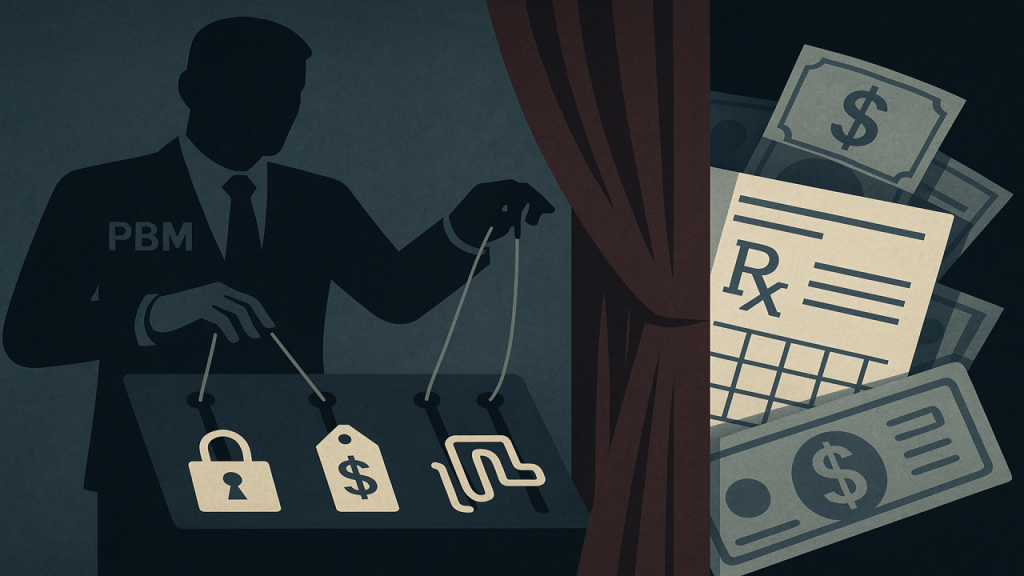
If you’re a plan sponsor still looking at fraud, waste, and abuse (FWA) through the lens of member misuse or doctor shopping, you’re only seeing the surface. The most damaging form of FWA, in pharmacy benefits today isn’t being driven by patients, prescribers, or even pharmacies. It’s baked into your non-fiduciary PBM contract. When the gatekeeper is the problem, the entire system breaks.
When Misaligned Incentives Become a Business Model
Most employers assume their PBM partner is working on their behalf. After all, they’re the ones “managing” your plan. But when your PBM profits more when you spend more, that’s not plan management. It’s margin extraction.
This is FWA at the structural level.
Five Ways Non-Fiduciary PBMs Exploit the System (and Your Budget)
1. Spread Pricing The PBM bills your plan $120 for a generic drug and pays the pharmacy $6. That $114 spread? It stays with the PBM. Multiply that across millions of claims and you start to understand why this is a preferred revenue stream. Unless your contract explicitly bans it, it’s happening.
2. Rebate Chasing Non-fiduciary PBMs often favor high-rebate drugs even when lower-cost alternatives are clinically equal or superior. Why? Because they retain a portion of the rebate, often undisclosed, and build formularies to maximize rebate revenue, not member outcomes or net cost efficiency.
3. Specialty and Mail-Order Steering PBMs own pharmacies and they profit by steering members toward their own dispensing channels, often for drugs with low clinical value. These internal referrals frequently bypass lower-cost, clinically appropriate alternatives, increasing plan costs and leaving members to pay more out of pocket for medications that offer little added benefit.
4. Vague Contract Terms “Pass-through pricing,” “rebates,” and “guarantees” sound good until you realize none of those terms are precisely defined. Loopholes allow PBMs to reclassify revenue, exclude certain drugs, or apply creative accounting to reduce what gets passed through.
5. Data Obstruction If you don’t have full visibility into claims-level data, including the amount paid to the dispensing pharmacy, you’re operating blind. And that’s exactly how your non-fiduciary PBM wants it.
FWA by Design, Not Mistake
This isn’t accidental. It’s not a bad actor. It’s a system that’s been carefully engineered to enrich PBMs under the radar of plan sponsors. Many employers don’t even realize they’re being taken for a ride until an audit uncovers millions in avoidable spend.
And even then, most plans settle for minor corrections instead of a total structural reset.
How to Fight Back
- Demand a fiduciary-standard contract: Clear terms. No spread. 100% rebate pass-through. Auditable.
- Control the formulary: Don’t allow a non-fiduciary PBM choose your drug list without scrutiny.
- Build in oversight: Require monthly reporting and quarterly audits, not just vague performance guarantees.
- Benchmark everything: Ingredient costs, dispensing fees, and rebates down to the claim level.
Bottom Line
PBM-driven FWA isn’t a footnote. It’s the headline. If you don’t fix this first, you’re just rearranging deck chairs on the Titanic.
Coming up next: Part 2 – What Pharmacies Don’t Want You to Audit
Elevate your expertise in pharmacy benefits management with the Certified Pharmacy Benefits Specialist® (CPBS) program, sponsored by the UNC-Chapel Hill Eshelman School of Pharmacy. Whether you’re an HR leader, finance executive, consultant, or pharmacist, this certification provides the in-depth knowledge and strategic insight needed to manage pharmacy benefits with confidence and cost efficiency. Gain up to twenty continuing education credits, enhance your career prospects, and help your organization take control of pharmacy spend. Register today to join a growing network of professionals shaping the future of pharmacy benefits management. Learn more at the Pharmacy Benefit Institute of America.
